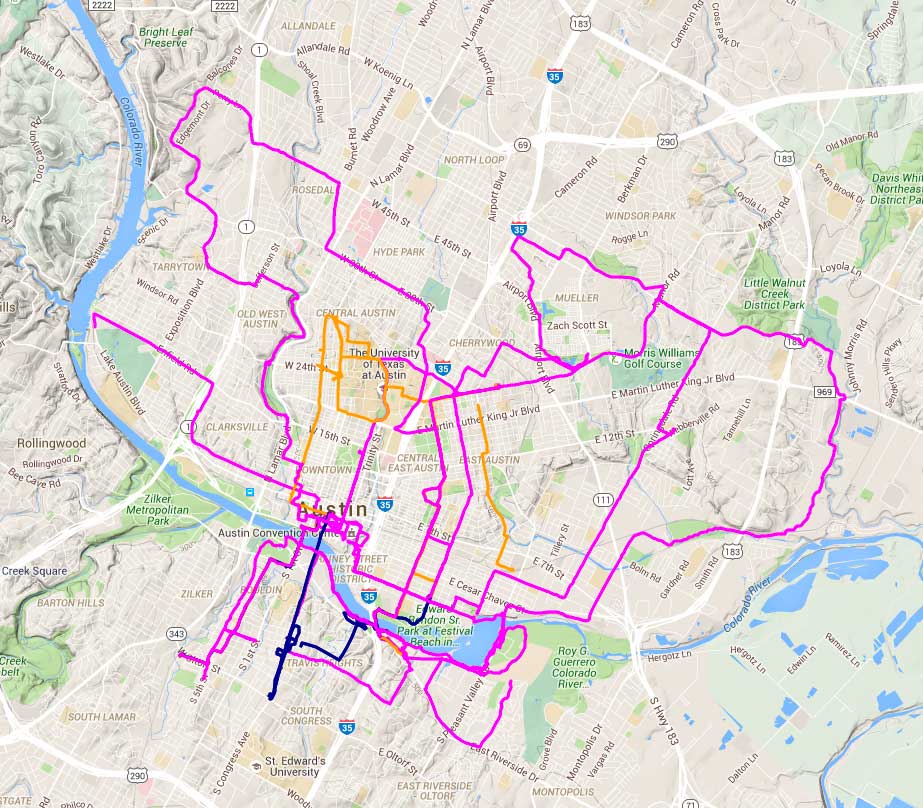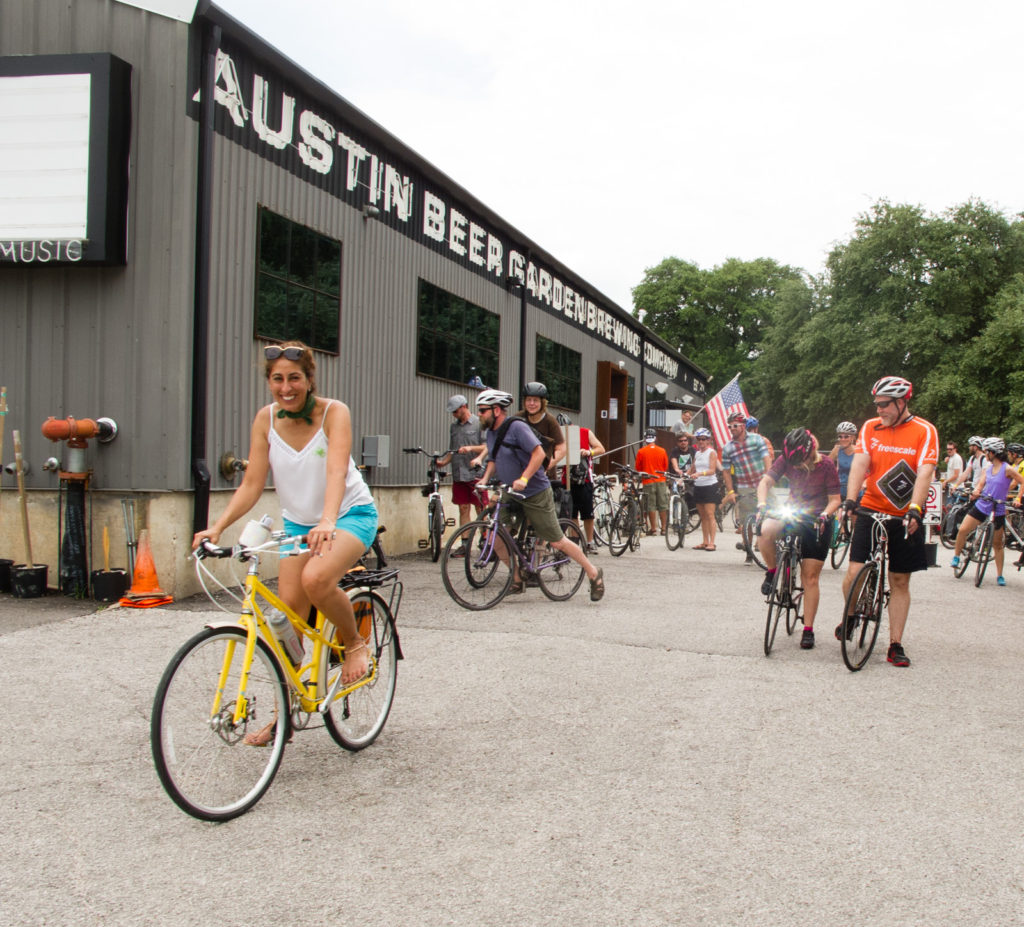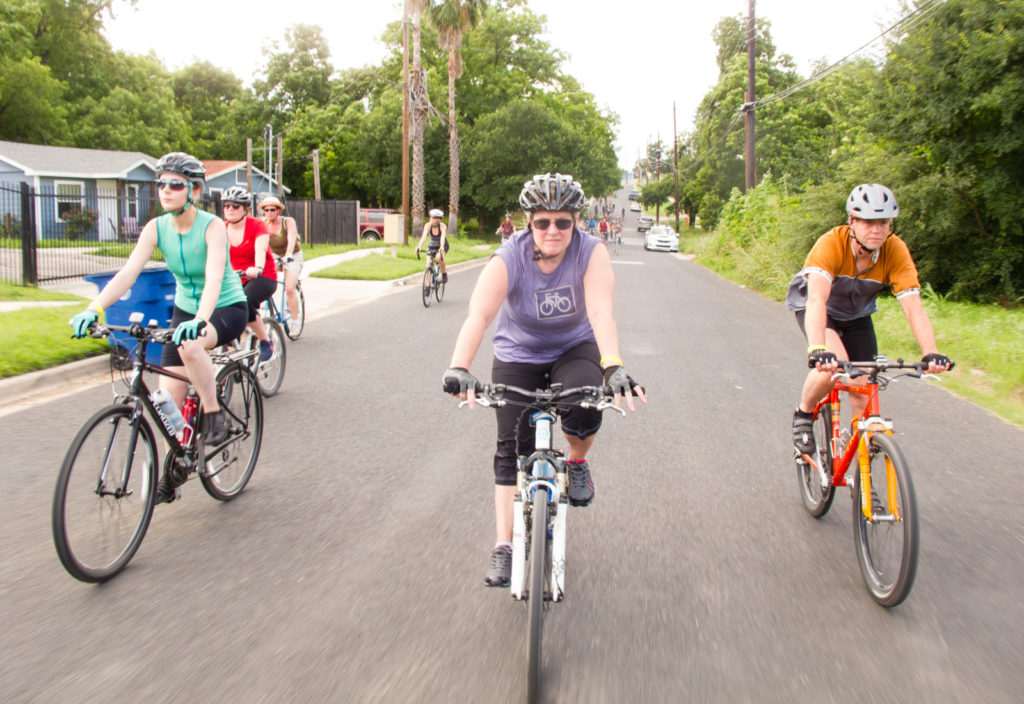Wrapping up Austin
We covered a lot of ground in Austin; 222km, over double what I did in Charlotte. It’s unfortunate that UT Austin (more or less in the center of this map) was not in session; you can see how much of the network is oriented towards the university. That’s a fairly fundamental problem for a summer research project on bike transportation–UMN and Ohio State will also be out of session when I visit Minneapolis and Columbus. I’ll have to see if I can manage to get back when the students are around.






